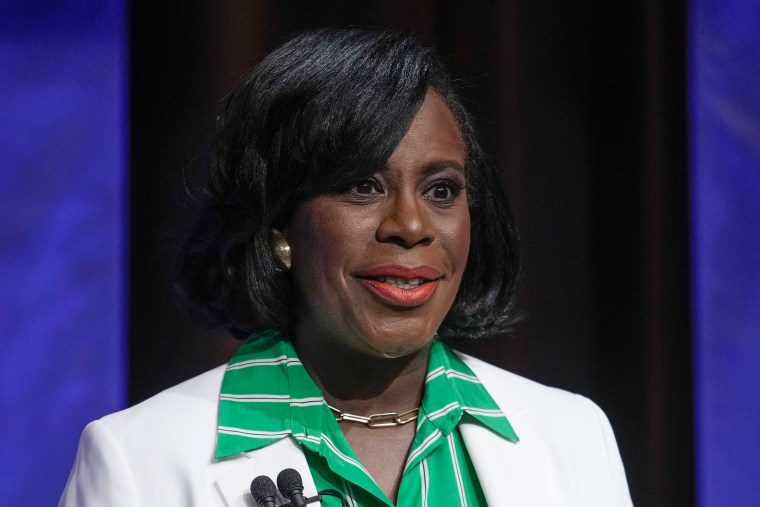On the eve of the Democratic primary for mayor in Philadelphia, Rep. Brendan Boyle had something to say.
The Democratic congressman, who had endorsed former city councilmember Cherelle Parker in the crowded race, decided to weigh in on how Philadelphians elect their mayor.
“I wish to formally endorse changing our electoral system for the election for mayor. We need to move toward either [ranked-choice voting] or a top-two system,” Boyle tweeted. “Furthermore, we should allow all registered voters to participate.”
Boyle noted that the winner of the Democratic primary traditionally goes on to win in November, and a crowded primary field means the eventual nominee may only need a small percentage of the primary vote to win.
“It’s nuts that our next mayor could be someone who receives 25% (or less!) in the Democratic Primary,” Boyle wrote. “This only makes the job of the next mayor more difficult, as he or she will be perceived as lacking a mandate. Time for our city’s electoral system to modernize.”
Parker actually went on to win Tuesday’s primary. As of Wednesday afternoon, she had won just 33 percent of the primary vote with 87% of the vote counted.
But Boyle’s comments highlighted how Philadelphia’s mayoral election process is an outlier Compared to other big cities.
Of the 10 most populated cities in the U.S., Philadelphia is the only one that elects its mayor using a traditional partisan primary without any ranked-choice or runoff component.
That’s in part because three of the 10 largest cities — Los Angeles, San Diego and San Jose — are in California, which has instituted a top two primary system for the last decade. Mayor’s races are technically nonpartisan. All candidates compete on the same primary ballot, with the top two vote-getters advancing to a general election. That means that in cities that will almost always choose a Democratic mayor, all voters get to participate from the start.
Five other big cities also host nonpartisan mayoral elections, but the top two vote-getters advance to a runoff if no candidate wins more than 50% of the vote. The most recent example took place in Chicago earlier this year, when progressive Brandon Johnson defeated the more moderate candidate, Paul Vallas.
In addition to Chicago, Phoenix, Ariz., and three large Texas cities — Houston, San Antonio and Dallas — employ a similar runoff system.
New York City, the country’s largest metropolis, has partisan primary elections for mayor, but uses ranked-choice voting to choose a party’s nominee. Under the system, which was implemented in 2021, voters can rank up to five candidates in order of preference. If a candidate wins a majority of first-choice votes, he or she wins the primary.
But if no candidate reaches that threshold, the candidate with the fewest votes is eliminated, and his or her votes are allocated among the remaining candidates. The rounds continue until two candidates remain, and the one with the most votes wins.
The New York City Board of Elections did struggle with the new process, and it took two weeks to determine the Democratic primary winner in 2021.

